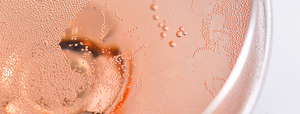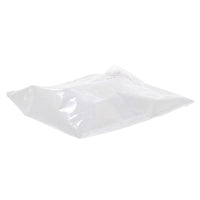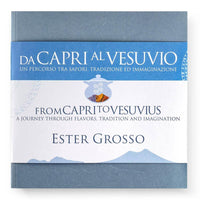A Brief History of Bubbles
Mar 17, 2021
An Insight into Italy’s Spumante Heritage
Spumante. It’s the sparkling fizz that marks endless decadent lunches beneath the summer sunshine, countless celebratory moments, and those rare-yet-priceless opportunities to indulge the senses. It’s a food-pairing champion of a wine, capable of standing up to bold flavors and harmonizing with more subtle ones both savory and sweet. It’s a world-beating favorite, popular across the globe, and helping to maintain Italy’s reputation as a wine producing country par excellence.
The seemingly unstoppable rise of Prosecco and other spumante wines across the past decade or so suggest a racy modernity to the wine style, and a relatively new phenomenon in opposition to Champagne’s oenological imperialism. However, as we’ll discover in this article, spumante wines have a long and proud history; a heritage which reaches back into antiquity while maintaining a continuous state of evolution and growth.
More popular than ever before, spumante today is a bonafide phenomenon in the wine world, with historic styles of Italian sparkling wine receiving often much-needed reappraisals and modernization, and lesser-known regional varietals finding their place in the spotlight.
Falling in Love with Fizz
The bubbles found in spumante and other sparkling wines are nothing new. While we often think of the 18th and 19th centuries as something of a golden age of sparkling wine - and this was indeed the period in which the wine style reached its headiest heights of popularity and fervor - fizzy wine has been a mainstay (although more often than not an undesirable one) of wine production since time immemorial.
The reason for this is simple: the fizz present in wines such as spumante is a naturally occurring phenomenon, usually as the result of a secondary fermentation which occurs in the bottle. In ancient times and right up until the 17th century, the reason for these bubbles occurring was more or less unknown; it was put down to the nefarious doings of unhelpful sprites and spirits, or the phases of the moon, or simply down to good or bad luck, depending on the opinion of the winemaker and their customer base. However, unlike in France, where the bubbles in wine were considered nothing short of a blight (and a serious sign of immorality in both the producer and the drinker), the Italians developed a real taste for fizz, and ultimately embraced the bubbles like no other.
The result of this early-adopted enthusiasm for spumante wine was that all across the many wine regions of Italy, localized production of fizzy wine arose, with unique and individually-recognized spumante styles emerging. Regional grape varietals were explored for their ability to produce the best spumante, and word spread across Europe - and later, the world - of the remarkable sparkling wines from well-respected spumante producers.
The Rise of the Charmat Method
In the 1700s, the spumante industry was beginning to find both its feet and a wider audience, thrilled by the emergence of sparkling wines that tickled the palate and offered that unique, giddy inebriation we all know and love. However, during this time, spumante right across Italy was being produced with the traditional method (known in wine circles as methode champenoise - which speaks volumes about the dominance that Champagne has over the sparkling wine scene), which involves a secondary fermentation taking place in the bottle. While the traditional method of producing spumante was all well and good for ensuring plenty of fizz, it had plenty of drawbacks which consistently provided both literal and figurative headaches for vintners and drinkers alike. The method was unpredictable, often volatile, and occasionally resulted in unpalatable wines.
The reasons for this were many. However, the greatest issues arose from winemakers adding grape must from other wine regions to compensate for overly dry wines, which caused greater unpredictability during secondary fermentation (resulting in exploding bottles or oxidation), and too much residual yeast in the bottle (resulting in foul-smelling wines).
This process of spumante production was more or less completely unchallenged right up until the mid-20th century. However, the 1950s saw everything change with the introduction of the Charmat Method (which is known in many parts of Italy as the Methodo Martinotti). This way of producing spumante aimed to address many of the historic issues associated with the wine style, and involved secondary fermentation taking place in large pressure-resistant stainless-steel tanks, which are mechanically controlled at optimal temperatures for measured fermentation. By gaining control over the traditional ‘wild cards’ of spumante production - namely residual yeasts and sugar levels - the resulting wines would become homogeneous, stable, and considerably more marketable.
This had plenty of obvious upsides, but many fans of spumante wines would argue that there was a downside to be considered, too. On the one hand, spumante winemakers were able to up their production methods and reach out to a wider audience of appreciative drinkers. On the other, it led to a period of mass production in even more traditional Italian spumante styles (most notably Lambrusco) which saw quality levels nose-dive in the mid to late 20th century, and which resulted in a long and drawn-out battle to restore their reputation. Quirks, character, and storytelling in spumante fell by the wayside as a result of this more industrialized approach to winemaking; a side-effect of ironing out certain flaws which is, thankfully, now being very much redressed.

The Volcano Factor: Spumante of Campania
The beautiful, sun-soaked region of Campania in Southern Italy is famed for a number of viticultural and gastronomic delights, not least the quality of its sparkling wines. Cultivated for hundreds of years, the Aglianico grape varietal reigns supreme here, with low-yielding vines producing remarkably expressive and delicious fruit.
Around the base and slopes of Mount Vesuvius, the soils burst with volcanic minerals, lending a distinct quality and character to the terroir. Millennia of seismic activity has imbued the vineyards with a complex geology, allowing the vines to take on aspects of the landscape and communicate this complexity in the glass. Few wineries exemplify this commitment to expression quite like Cantina del Vesuvio, which utilises the Aglianico grapes - grown exclusively in the foothills of the volcano - to produce two spumante wines; the Capafresca White label and the vintage Black Label. These spumante wines gain much of their color and distinction from contact with the pigment and tannin-bearing grape skins, resulting in a stunning rosé character, gentle soft fruit flavors and aromas, and the ability to pair beautifully with the seafood dishes and cured meats the region is famed for.
Regional Varietals, Terroir, and Spumante Trends of Today
The wine scene of the 21st century is an ever-evolving and dynamic one, and today’s wine aficionados are keen to seek out lesser-known spumante styles which come with their own stories to tell, their own histories to impart, and an exciting array of characteristics.
Expression of terroir - a French term which roughly translates to ‘a sense of time and place’ - has become a key desirable quality in contemporary wine of all styles, and as such, highly regionalized and location-specific wine styles have massively increased in popularity. This is evident in the growing demand for spumante wines from the volcanic soils of Campania - as mentioned - where an essence of this mineral-rich and unique landscape is communicated in every sip, and where ancestral winemaking methods (based on quality rather than quantity) are able to come forward and be celebrated.
Thanks to several centuries of rich and varied history, the spumante industries, individual winemakers, and traditions of Italy are alive, well, and very much in demand worldwide. With so many styles to discover, and so many flavors, aromas, characteristics, and stories to encounter, it’s a truly fascinating time to explore, there’s never been a better time to fall in love with spumante.




